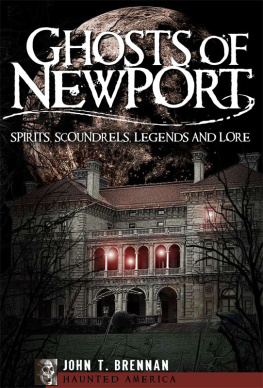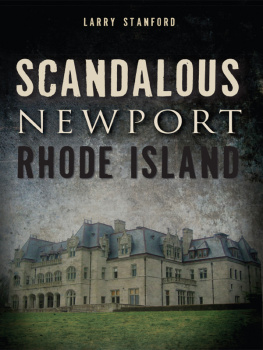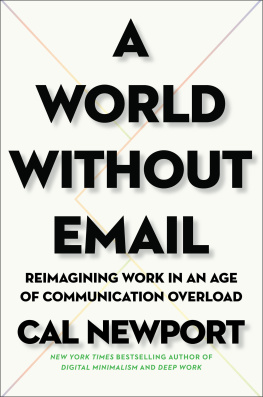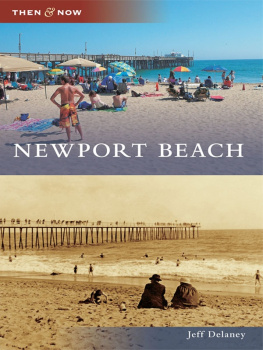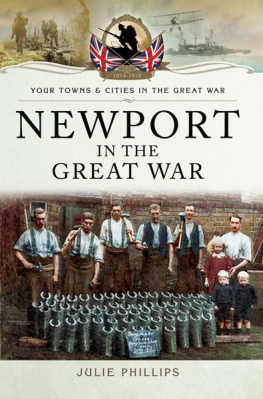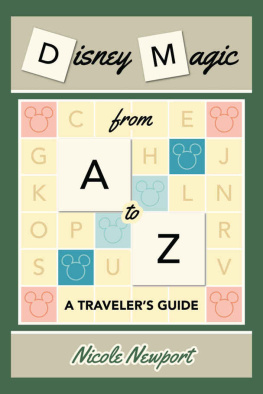Published by The History Press
Charleston, SC
www.historypress.net
Copyright 2018 by Brian M. Stinson
All rights reserved
Front cover, clockwise from top left: courtesy of Bonnie L. Mohr; authors collection; courtesy of Daniel Titus; authors collection; authors collection.
First published 2018
e-book edition 2018
ISBN 978.1.43966.421.6
Library of Congress Control Number: 2017960346
print edition ISBN 978.1.46711.946.7
Notice: The information in this book is true and complete to the best of our knowledge. It is offered without guarantee on the part of the author or The History Press. The author and The History Press disclaim all liability in connection with the use of this book.
All rights reserved. No part of this book may be reproduced or transmitted in any form whatsoever without prior written permission from the publisher except in the case of brief quotations embodied in critical articles and reviews.
Barbara Chapman and Patricia Caswelltwo Newport educators who made a difference. Both cared deeply about the people and welfare of Newport, Rhode Island.
CONTENTS
ACKNOWLEDGEMENTS
Of the information in this book, 99 percent was obtained at the Redwood Library and Athenaeum, located on Bellevue Avenue in Newport. The Redwood Library can make the accurate claim as being the oldest library building in the United States. The Library Company of Philadelphia, founded by Benjamin Franklin, is older, but it is not located in its original building.
I wish to thank the entire staff at the Redwood Library for their quick responses to my numerous requests. Most, if not all, of the staff members would go on to become friends. I want to thank former head librarian Lynda Bronaugh and the former special collections librarians, Lisa Long, Laurel DeStefano and Robert Behra. Robert was extremely helpful, always on the lookout for potential claims. When it came to the bibliography, Robert set the standard and pushed me to the limit, as I spent sixteen months doing the original bibliography for this book.
Myles Byrne and Jennifer Caswell from the library disposed of all related technical challenges. Keep in mind, the original manuscript was typed on a word processor and had to be transferred to Microsoft Word. Sounds easy, right? But it took more than two years of scouring the country to find the correct software to accomplish this feat.
And, lastly, to the former Redwood librarian Wendy Kieron-Sanchez, who, to this day, helps in various aspects needed to bring this book to lifethank you.
Daniel Titus and his staff at Salve Regina University took the enormous amount of photographs, negatives and slides and scanned them into the proper format. I thank Dan very much for his assistance.
I wish to thank George Herrick for sharing his knowledge of publishing and history and for always being accommodating and taking time for me.
An enormous debt is owed to Newporter Lynne Tungett. As the original publisher of Newport Life Magazine and presently Newport This Week, she published over the years an extensive amount of Newport firsts in all her publications, including the Pineapple Post. I appreciate her help and guidance; I treasure our friendship very much.
Thanks needs to be given to Mark McKenna. Not only did he produce many of the claims, but his vast knowledge of Newport is also simply amazing. Over the years, he spent endless nights at my apartment in the Christmas Tree House, poring over the finalized research and reading from the manuscript. This home is known as the Clement C. Moore House, located at 25 Catherine Street, where, it has been said, Moore wrote Twas the Night before Christmas. The poem dates to about 1822, but the house was not constructed until the 1850s, which makes that story preposterous.
In addition, I want to thank my parents. They helped in endless capacities, from typing and proofreading to my dad sharing his extensive knowledge of religion, which helped break down the various denominations. However, the majority of the digitized version and typing was done by Linda Hurteau.
INTRODUCTION
Its easy to confuse a first event with an oldest one, or to confuse the longest operating with the most continuous. The wording of the claim is critical. Newport makes over 150 claims for a first on a national level. But for how many can we really take credit? This is not exactly science. Some claims are sketchy at best, having never been examined for reliability and accuracy, usually derived from newspaper clippings, index cards, programs and tales passed along over time. How many are truths? How many are legends? This book includes 75 stories, featuring more than 100 claims for Newport, Rhode Island. (Claims not included in chapter titles are set in boldface.)
A first refers to the first time something (an event or building, for example) happened. An oldest claim refers to a previous claim to a first, but it no longer exists. An excellent example of this is the claim that the Touro Synagogue is the oldest synagogue in America. The Shearith Israel Congregation of New York City, founded in 1654, built its structure in 1730. Its original house of worship was built on what is now known as South William Street, in New York City. The congregation is currently worshiping in its fifth synagogue. Touro congregants actually settled in Newport in 1658 as Jeshuat Israel. The Touro Synagogue building was finished in 1763, thus leaving the oldest (not first) synagogue distinction to Touro.
The researcher or reader must beware. You cant always believe what you read. To determine a facts authenticity, it should be cross-referenced in several sources. In many cases, modern books or articles about Newport contain information that is not completely accurate. When this information is then recounted by another writer, a new interpretation enters the equation, leading to a snowball effect of inaccuracy. The use of primary sources always outweighs the use of secondary sources. Locally, the Newport Mercury, city atlases and city directories represent an excellent basis for cross-referencing historical information.
So, with that in mind, after diligent research and cross-referencing, the following claims about Newports colorful past can be made. Keep in mindthe truth always outweighs the fallacy.
Please note: This book represents claims for first. The companion book to be released at a later date will explore the oldest claims of record.
NEWPORT WAS THE SITE OF THE FIRST FREE PUBLIC SCHOOL IN THE ORIGINAL THIRTEEN BRITISH NORTH AMERICAN COLONIES
(ESTABLISHED AUGUST 20, 1640)
The schools in early America were very different from the public schools of modern times. The free public school system of today had not yet been developed. The colonists who had come from England, where there were only endowed tuition schools, not free public schools, had to devise their own plans for education. The original schools of colonial America were not supported by general taxation, as is done today, but by income derived from various sources, including donations, subscriptions and land grants. People of sufficient means contributed, while poorer individuals did not.






